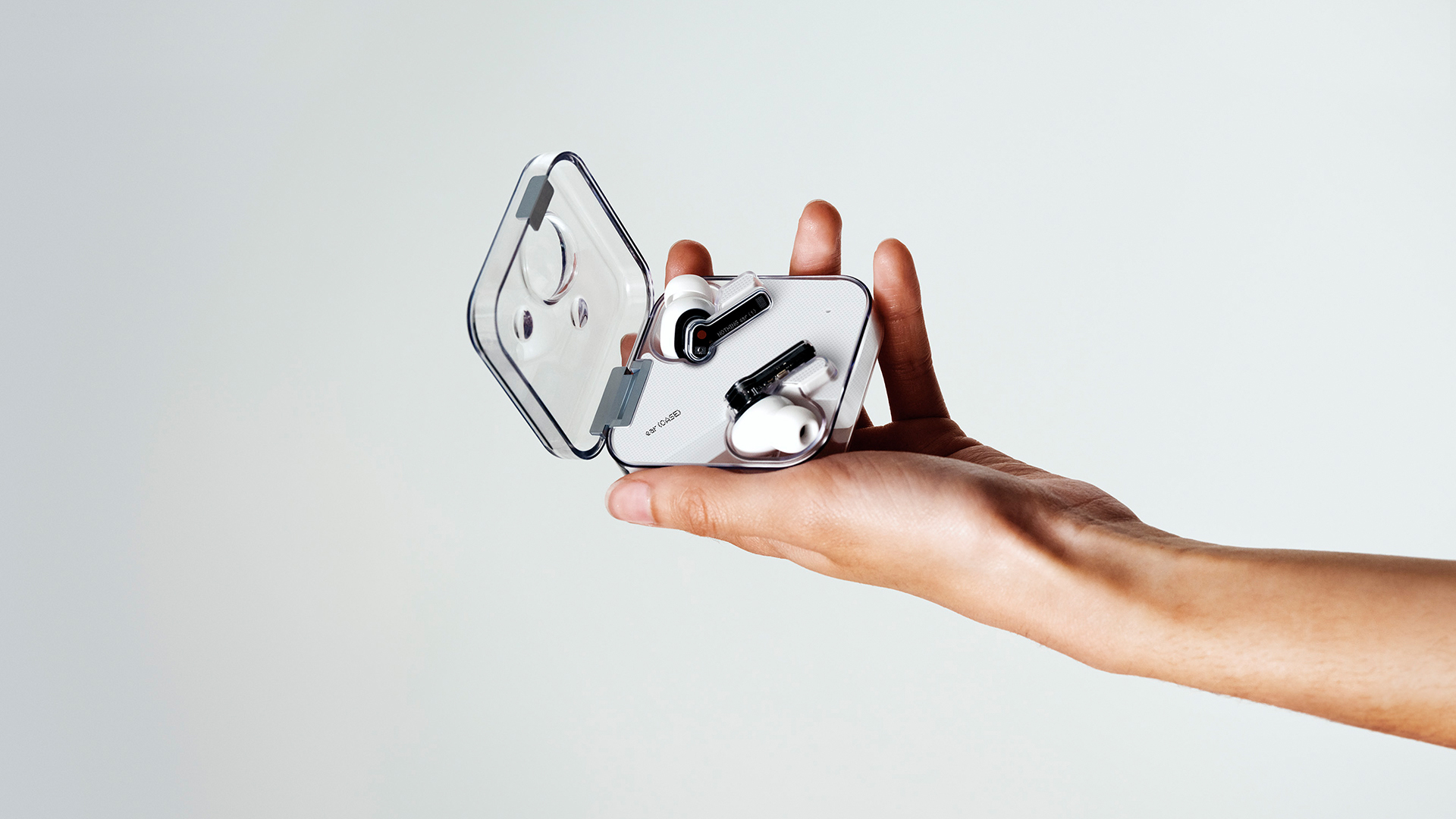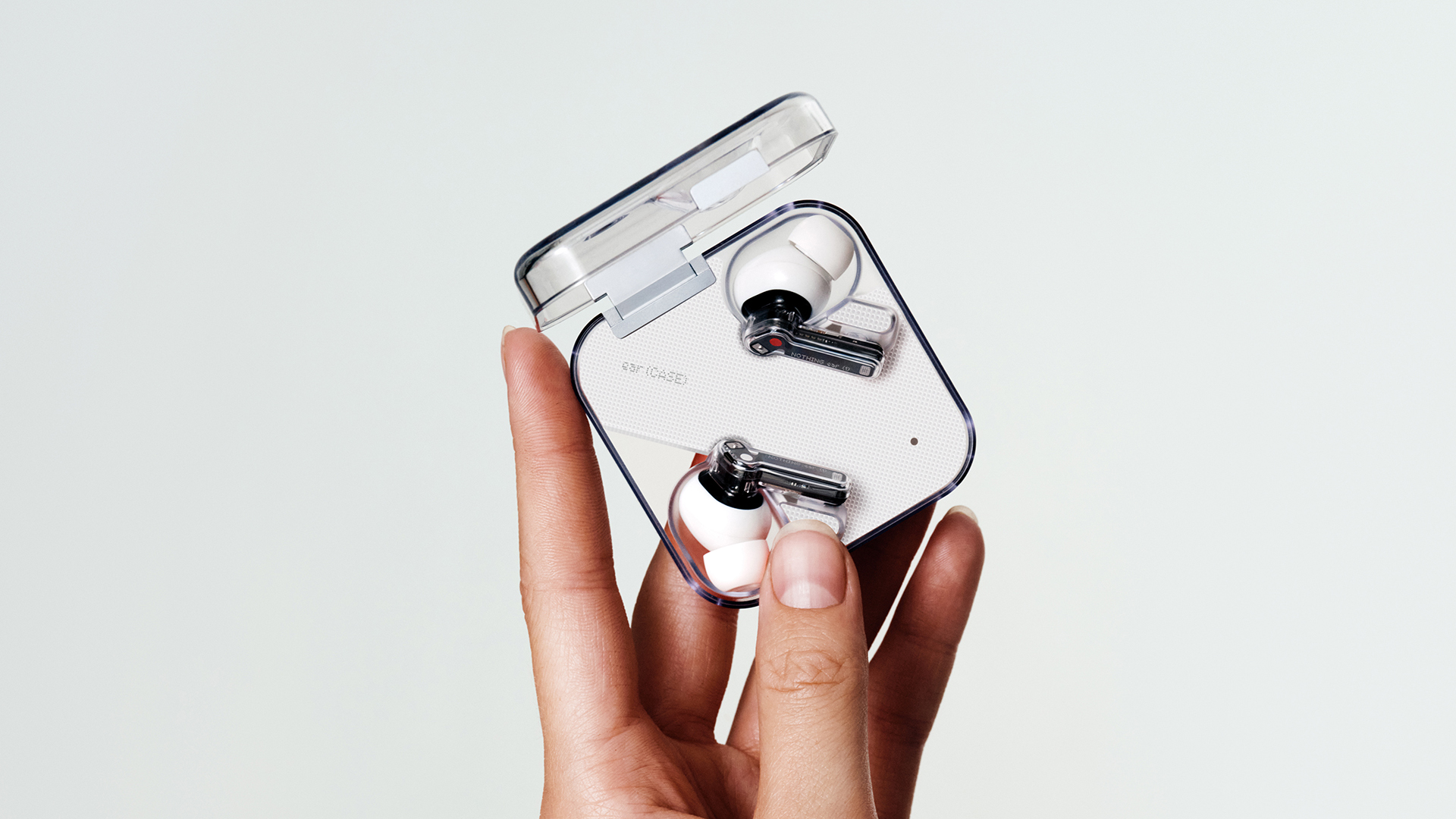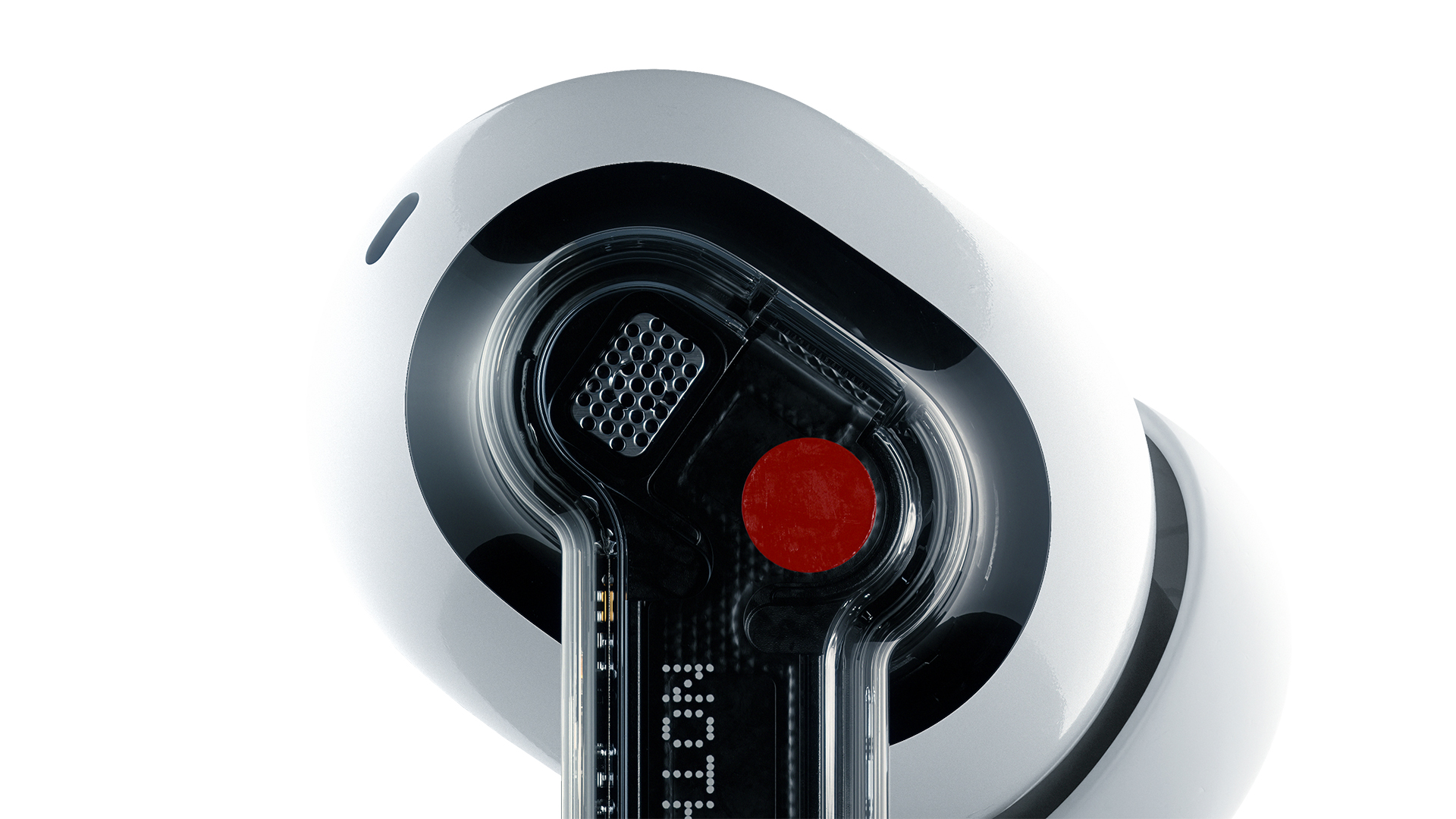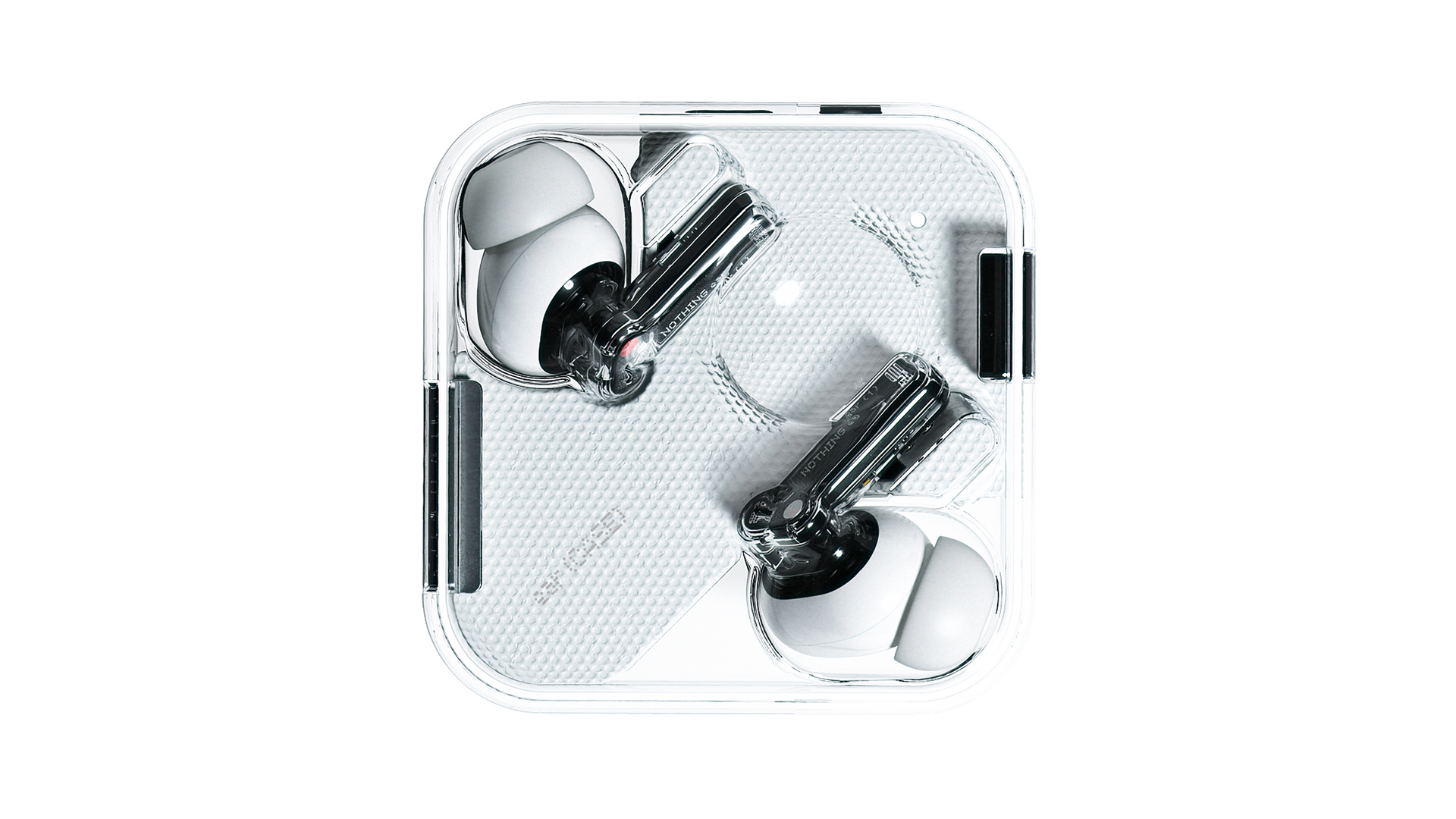What Hi-Fi? Verdict
Nothing ventured, nothing gained: Nothing Ear (1) has the specifications to become a budget headphone contender, but the sound is a good step below class-leading
Pros
- +
Extensive feature set
- +
Enjoyable app
- +
Strong aesthetic
Cons
- -
Tubby bass
- -
Timing issues
- -
Over-emphasised upper midrange
Why you can trust What Hi-Fi?
Well, here goes Nothing. If you think we’re being a little harsh or negative right from the get-go of this review, please note that our tone, were we able to speak to you, would be quite the opposite. In fact, with OnePlus’ co-founder Carl Pei at the helm, we have high hopes that the London-based startup he calls Nothing will, in fact, turn out to be quite something.
The fledgling firm’s first ever product is the Nothing Ear (1) true wireless earbuds, priced at a headline-grabbing £99 ($99, AU$140). To describe this fee as next to Nothing might be a stretch, but it’s still very reasonable considering the features onboard.
Those features include three ANC profiles, Bluetooth 5.2, wearer detection and a transparent charging case that supports Qi wireless charging. Add decently solid build into the equation and Nothing looks to have delivered a lot for the money.
Build

These in-ears arrive in a refreshingly small, soap-sized package, but everything you need is right here: small and large eartip options to complete the set (a medium size comes pre-fitted), a USB-C charging cable and, of course, the rounded-edge, square, see-through case containing the headphones.
The case reminds us of Apple’s original EarPods packaging in that it is roughly the same size and transparent with a white base, so that you can see the buds nestled inside, on the diagonal – only this time said base houses connectors, magnets and batteries, plus Qi wireless charging support. The flip-top lid, which opens like a compact and utilises nice strong magnets to snap shut reassuringly, features a fisheye dip when closed, perfect for a thumb. This helps hold its cargo securely in place and means that you'll probably end up twizzling it like a fidget spinner.

Battery life Up to 34 hrs including the case (ANC Off); 24 hrs (ANC On)
Dimensions (hwd) 28.9mm x 21.5mm x 23.5mm
Weight 4.7g
Bluetooth 5.2
Charging Case supports Qi wireless charging
IPX 4
Considering how keen Nothing is to move away from the physical product and to impress upon you the uniqueness of its inaugural proposition, we can’t help but remark that the glossy white pill-shaped driver housings and silicon tips are practically identical to those of Apple’s AirPods Pro.
Where the stems attach, however, the design does veer into the unknown. Here the hue is glossy black and the stems are encased in transparent plastic, thus showcasing the shiny metallic innards, including the battery connectors, circuitry and mics (there are three per bud). Another design flourish is the red dot on the right earpiece, which corresponds to a red dot in the well of the right earbud in the case – a simple but useful feature that means struggling to get the correct bud into its rightful well is a thing of the past.
The latest hi-fi, home cinema and tech news, reviews, buying advice and deals, direct to your inbox.
Each earpiece weighs 4.7g and feels light and comfortable in our ears, even without switching the eartips. It doesn’t necessarily feel secure enough for a heavy metal head-thrash, but as we take to the streets the fit is light and pressure-free, even as we switch between noise cancellation profiles. Under the bonnet, there’s a large 11.6mm driver plus Bluetooth 5.2, although there’s no support for aptX higher resolution audio.
Connecting to a second device can be done by slipping the buds back into the case and long-pressing the button on the side of the box, next to the USB-C charger. In terms of battery, you’ll get just under six hours of playtime from the buds (just under five with ANC deployed) and up to an impressive 34 hours in total with the transparent charging case (or 27 with ANC on). A 10-minute charge promises up to eight – yes eight – hours of juice, too, a claim that rings true during testing.
Features

Ear (1)’s touch controls can be customised in the slick Ear (1) app for iOS or Android devices. This app features the same retro digital typeface that's printed on the case and the stem of the buds. Here, below a picture of the Ear (1) you will see two bubbles: ‘hear’ and ‘touch’. Hear pulls up a list of ways to customise the sound, including ‘light’ or ‘maximum’ noise cancellation, transparency mode, or off.
We take to the streets and find these profiles effective and useful. Cars and voices of passers-by are far more readily available to us when deploying transparency mode, but without the disconcerting wind-tunnel effect – and without negatively affecting the music we’re listening to. Noise cancellation is also surprisingly effective and the fact that you can get two levels of active cancellation is virtually unheard of in this price category.
Along with two visual themes, the option of turning off auto-pause wearer detection and the useful Find My Earbud feature (which emits a sound from your earbuds, for easier location if one has fallen down the back of the sofa, say) there’s also an equaliser tab. Although there’s no three-band EQ stage, you can switch from ‘balanced’ to ‘more treble’, ‘more bass’ or ‘voice’ presets – an excellent addition at this level.
During testing, pairing was perfectly acceptable, call quality good, and the genuinely likeable app never suffered bugs or crashes during our time with it.
Switching to the Touch tab, we’re given the option of customising the triple-tap or long-press of either earpiece. We tweak it so that triple-tapping the left bud skips back a track, triple-tapping the right skips forward, and long-pressing switches noise-cancelling profiles – although it’s worth noting that in terms of long-pressing, it’s either that, or no action.
Interestingly, a single tap performs no function here, probably to avoid inadvertent track pausing but, sadly, we find double-tapping to play and pause tracks is resoundingly hit and miss. Volume adjustments can supposedly be made by swiping up and down the stem of either earpiece, but again, we find it hard to actually make this happen – especially without dislodging the units from our ears. At this level, digging out your phone to alter playback is hardly a deal-breaker, but if controls are included, it's reasonable to expect them to work satisfyingly.
Sound

Setting the profile to balanced, we find In the Fire by Dave expansive from the outset, through the opening samples and looped backing voices to Dave’s central and significant verse. Our playlist continues to Can’t Feel My Face by French The Kid and the brooding, heavily treated vocal sample through the bass registers goes deep, snaking from our left ear to our right and is nicely separated from the female “How’s your love life?” sample as the verse starts.
The delivery is far from perfect though. Switching to Cambridge Audio’s original Melomania 1, now available for the same price, the bass is more impactful and zealous, making the Ear (1) feel altogether laid-back and lacking precision in terms of timing. While expansive, the Ear (1) suffers from tubbiness through the low end in direct comparison.
Stream Coheed and Cambria’s The Black Rainbow and the post-apocalyptic low-level soundscape intro is more foreboding and dynamically accurate through the Cambridge earphones. The vocal is more neutral, textured and three-dimensional through the mids with the Melomania 1s too.
The Ear (1)’s tuning emphasises higher midrange vocals, bringing them forwards in the mix to gain detail and excitement, but the resulting sound comes off a little thin and is compressed through the higher frequencies to complete a somewhat confusing presentation overall. As the track builds to a reverb-heavy crescendo, we aren’t feeling the end of days quite as forcefully and cohesively as we might have hoped.
Verdict
Often, readers simply glance at the star-rating at the top of the review then skip here to get to the crux of the matter.
After scrolling past glossy images of Nothing’s futuristic near-transparent units, these readers have likely come to the conclusion that Nothing Ear (1) is a case of style over substance. To those readers, we must emphasise that this assumption is incorrect. The workmanship is good here, and the feature set – including a commendable new app – is even better. At this price-point, we have yet to experience easier access to noise cancelling. For many, the Ear (1)’s comely looks, easy fit, ANC, decent battery life, IPX4 splash-proofing and passable sound will suffice.
Ultimately, however, sound quality is the making or breaking of a set of wireless headphones. Here, Nothing Ear (1) falls short of the class leaders in terms of timing and neutrality across the frequencies, as well as for bass grip and accuracy. That said, Nothing is definitely on to something here, and we cannot wait to listen to future iterations.
SCORES
- Sound 3
- Features 5
- Build 4
MORE:
Read our guide to the Best In-ear Headphones
Read our Cambridge Audio Melomania 1 review
Read our Cambridge Audio Melomania 1 Plus review
Read our Earfun Air Pro review
What Hi-Fi?, founded in 1976, is the world's leading independent guide to buying and owning hi-fi and home entertainment products. Our comprehensive tests help you buy the very best for your money, with our advice sections giving you step-by-step information on how to get even more from your music and movies. Everything is tested by our dedicated team of in-house reviewers in our custom-built test rooms in London, Reading and Bath. Our coveted five-star rating and Awards are recognised all over the world as the ultimate seal of approval, so you can buy with absolute confidence.


